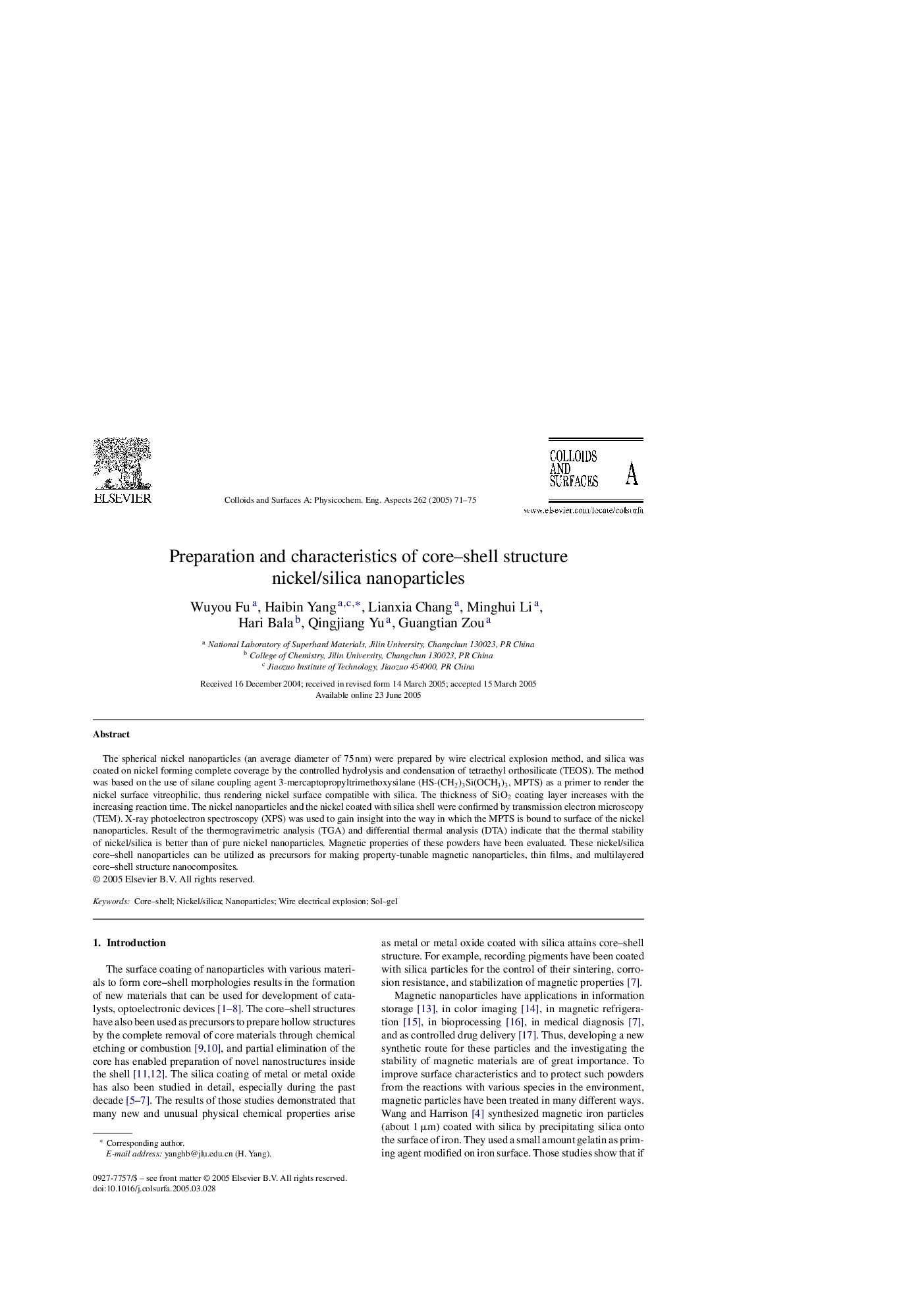| Article ID | Journal | Published Year | Pages | File Type |
|---|---|---|---|---|
| 9675804 | Colloids and Surfaces A: Physicochemical and Engineering Aspects | 2005 | 5 Pages |
Abstract
The spherical nickel nanoparticles (an average diameter of 75Â nm) were prepared by wire electrical explosion method, and silica was coated on nickel forming complete coverage by the controlled hydrolysis and condensation of tetraethyl orthosilicate (TEOS). The method was based on the use of silane coupling agent 3-mercaptopropyltrimethoxysilane (HS-(CH2)3Si(OCH3)3, MPTS) as a primer to render the nickel surface vitreophilic, thus rendering nickel surface compatible with silica. The thickness of SiO2 coating layer increases with the increasing reaction time. The nickel nanoparticles and the nickel coated with silica shell were confirmed by transmission electron microscopy (TEM). X-ray photoelectron spectroscopy (XPS) was used to gain insight into the way in which the MPTS is bound to surface of the nickel nanoparticles. Result of the thermogravimetric analysis (TGA) and differential thermal analysis (DTA) indicate that the thermal stability of nickel/silica is better than of pure nickel nanoparticles. Magnetic properties of these powders have been evaluated. These nickel/silica core-shell nanoparticles can be utilized as precursors for making property-tunable magnetic nanoparticles, thin films, and multilayered core-shell structure nanocomposites.
Related Topics
Physical Sciences and Engineering
Chemical Engineering
Colloid and Surface Chemistry
Authors
Wuyou Fu, Haibin Yang, Lianxia Chang, Minghui Li, Hari Bala, Qingjiang Yu, Guangtian Zou,
